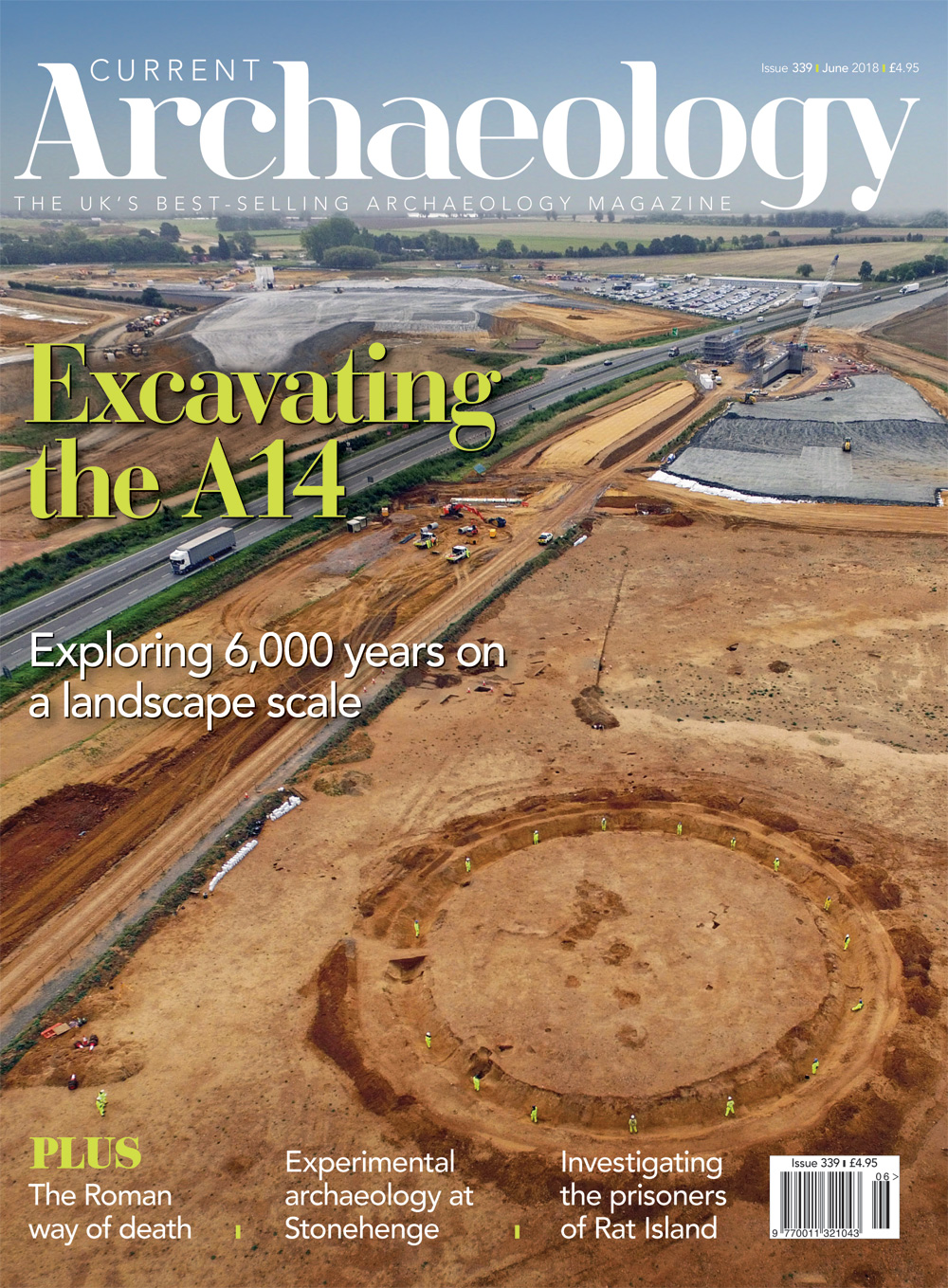It is always a joy and a privilege to visit excavations on behalf of CA, but I seldom get to see a dig on the scale of the project currently under way beside the A14 between Cambridge and Huntingdon. There, major road improvement works are allowing an entire historic landscape to be explored in minute detail, with finds spanning 6,000 years.
Perhaps surprisingly, there is relatively little sign of the dead among these discoveries – but burial grounds form the focus of a new exhibition at the Museum of London Docklands. Its displays draw together the latest research on the sweeping Roman cemeteries that once bounded Londinium. Behind the material evidence, we find powerful and poignant human stories dating back 2,000 years.
At ‘Rat Island’, off Portsmouth, storms have exposed lonely graves dug into unconsecrated beach shingle. Were their occupants Napoleonic-era prisoners of war, or civilian convicts from the prison ships that once moored in these waters, as local legends suggest? Moving from cutting-edge science to the heady early days of modern archaeological practice, we look back over the last 70 years with influential Norfolk archaeologist Peter Wade-Martins; while, at Stonehenge, we join an experiment examining how the famous bluestones may have been moved (my arms have only just recovered).
Finally, we recently received an email from the father of a nine-year-old girl called Rose. We were delighted to hear she has started to get involved in digging – and reading CA! – and her proud dad is asking for advice. We’re all in favour of helping inspire the next generation of archaeologists – why not read the letter on p.6 and let us know if you have any words of guidance or encouragement for budding diggers?
Carly Hilts
IN THIS ISSUE:/n
FEATURES/n
A LANDSCAPE REVEALED/n
Exploring 6,000 years of Cambridgeshire’s past along the A14
Major road improvement works on the A14 are providing the opportunity to investigate an entire historic landscape over six millennia. With finds spanning the Neolithic to medieval periods, the excavations offer a unique glimpse into the lives of the people who once called this region home.
THE ROMAN WAY OF DEATH/n
Investigating life and loss in Londinium
While many of the customs of our forebears may seem quite remote or foreign, death is one thing that unites every human, regardless of the period in which they live. A new exhibition at the Museum of London Docklands explores this connection through the diverse Roman practices surrounding death and burial in the multicultural hub that was Londinium.
A WICKED NOAH’S ARK/n
Exercise Magwitch and the prisoners of Rat Island
It had long been rumoured that a tiny island in Portsmouth harbour housed the graves of Georgian convicts and prisoners of war. When burials became exposed by storms, it seemed that there was some truth to the legend. MoD archaeologists have been working to rescue these graves from the tide, and aiming to solve the mystery of their occupants.
PETER WADE-MARTINS/n
Pioneering archaeology in Norfolk – and beyond
In a career spanning seven decades, Peter Wade-Martins has left an indelible mark on archaeology in Norfolk. Here, we take a tour from his early schoolboy days organising archaeology events for his classmates, to his revolutionary time at university helping pioneer government-supported archaeology, through to more recent years promoting the preservation of heritage and the environment.
LIKE A ROLLING STONE/n
Experimental archaeology at Stonehenge
Archaeologists and members of the public recently came together on Salisbury Plain in an experiment exploring how a bluestone may have been moved. It took a Herculean effort that left the group feeling united with accomplishment – might the collaborative act of constructing Stonehenge have been as important to its Neolithic builders as its final purpose?
NEWS/n
Revealing the archaeology of Ramsey Island; Early evidence for St Albans Cathdral emerges; Living at Star Carr in the face of climate change; Meticulous metric survey of the Antonine Wall; Mathematically modelling Bronze Age hoards; Science notes; Medieval ‘suburbs’ of Dublin uncovered; Finds tray
REGULARS/n
Comment
Joe Flatman excavates theCAarchive
Context
A fairytale find: St Ouen, Jersey
Reviews
Britannia Romana: Roman inscriptions and Roman Britain;Protecting the Roman Empire: fortlets, frontiers, and the quest for post-conquest security; Rock, Bone, and Ruin: an optimist’s guide to the historical sciences; Manx Crosses: a handbook of stone sculpture 500-1040 in the Isle of Man; 50 Finds from Warwickshire: objects from the Portable Antiquities Scheme; Abandoned Villages
Exhibition
The Square Box on the Hill at Norwich Castle Museum & Art Gallery
Calendar
Our selection of exhibitions and events
Sherds
Chris Catling’s irreverent take onheritage issues
Odd Socs
TheSociété Jersiaise

